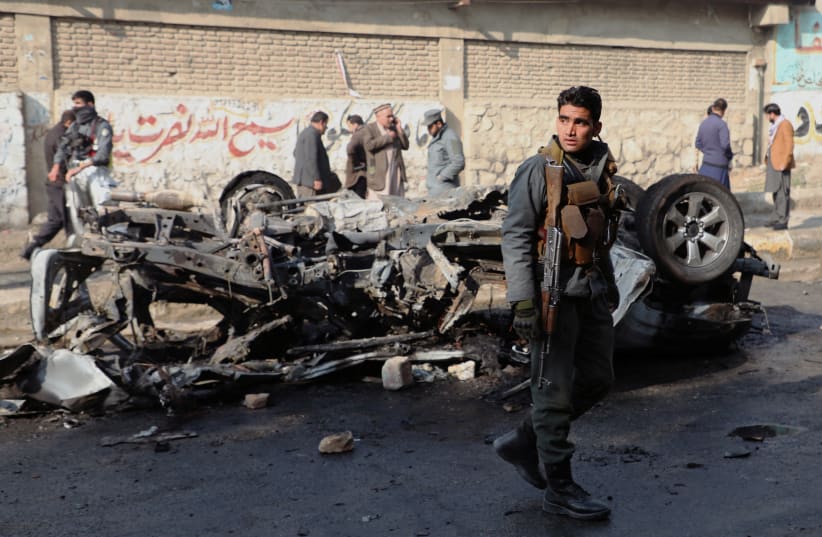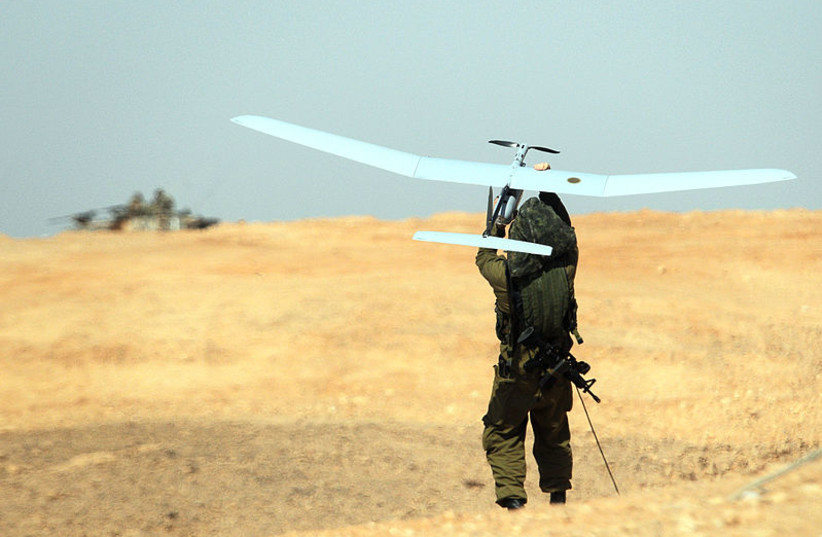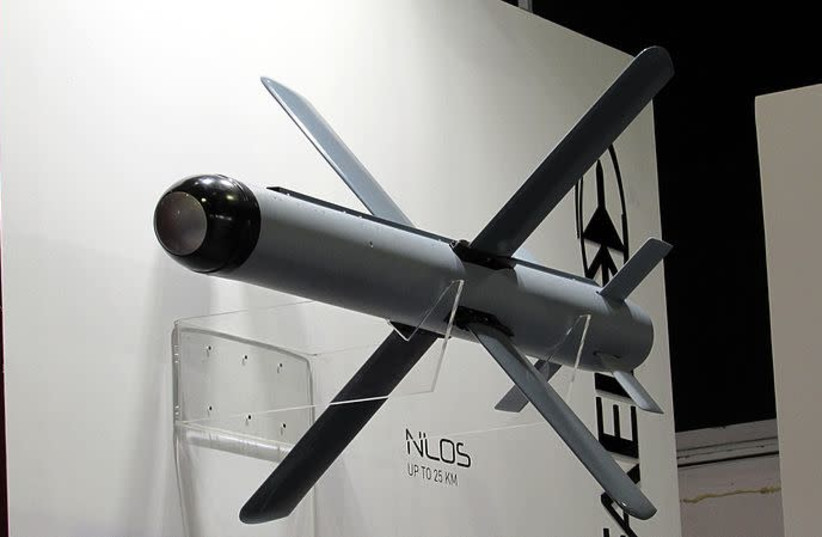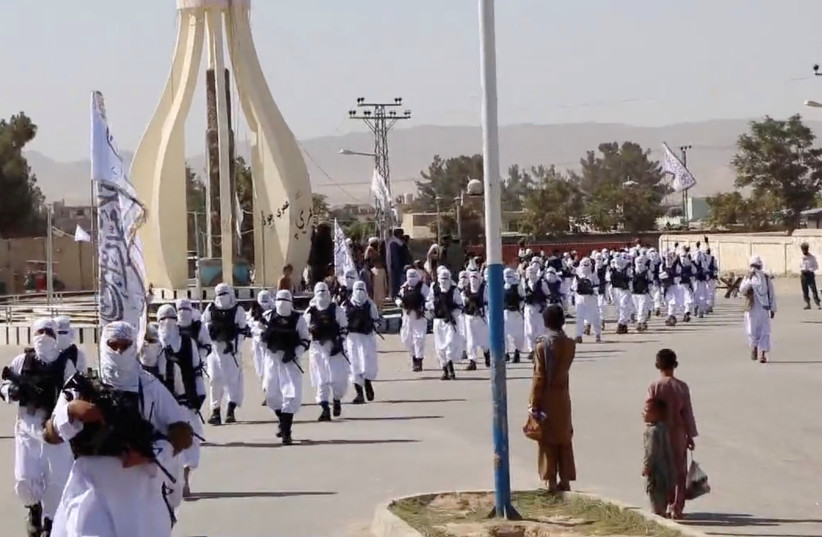As Western forces leave Afghanistan, Israeli weapons systems will no longer hunt Taliban fighters.
Though Israeli troops have never been on the ground in the war-torn central Asian country, numerous coalition nations used Israeli systems during the 20 years of fighting against the radical jihadist terrorist group.
While many Israeli defense companies have stayed mum on the use of their products in Afghanistan, according to multiple reports, countries like the United Kingdom, Germany, Canada and Australia have used their products for years.
Numerous countries used remotely piloted aircraft (RPAs) to collect intelligence, and Israeli-made SPIKE missiles were used in battle. Troops were also able to drive around safely in high-intensity areas in Israeli-made MRAP (Mine-Resistant Ambush Protected) military light tactical vehicles.
One of the main Israeli weapons systems used by foreign militaries in Afghanistan was drones.
Foreign reports state that Israel is considered a leading exporter of drones and has sold such systems to numerous countries including Australia, Canada, Chile, Colombia, France, Germany, India, Mexico, Singapore and South Korea.
The German Air Force began operating the Heron TP, manufactured by Israel Aerospace Industries (IAI), in Afghanistan in 2010. They were involved in thousands of missions, logging thousands of flight hours.
The Heron TPs are IAI’s most advanced RPAs with 40-hour endurance, a maximum take-off weight of 11,685 pounds, and a payload of 2,204 pounds. They can be used for reconnaissance, combat and support roles, and can carry air-to-ground missiles to take out hostile targets.
The German pilots were trained in Israel regarding how to operate the RPA and learn about its surveillance capabilities.
The Canadian military and the Australians also flew IAI’s Heron 1 RPA in Afghanistan.
Equipped with satellite data link and electro-optical infrared sensors, the Heron 1 is not only able to provide reconnaissance to ground forces in combat situations, assist in convoying and patrolling, create movement profiles, and carry out long-term monitoring, but it is also able to track down explosives from the air.
Several of them crashed in Afghanistan.
But it wasn’t only the Heron that was flying in Afghanistan’s skies.
Since 2005, the Australian Army in Afghanistan has also flown the Skylark 1 unmanned aerial vehicle (UAV) manufactured by Elbit Systems.
The Skylark, measuring seven and a half feet, is used by troops for tactical surveillance and close-range counter-terror missions. It can be launched by one or two soldiers, and is operated on the roof of buildings or in the back of armored personnel carriers, providing live video to operators once airborne.
With a range of 10-15 km., the mini-UAV has an exceptionally quiet electric motor and outstanding observation capabilities giving troops beyond-line-of-sight intelligence, enhancing their performance in various mission scenarios.
Australia also flew the Skylark during missions in Iraq.
In addition to RPAs, Rafael Advanced Defense Systems’ Spike NLOS (Non Line Of Sight) missile was used by both the British and Canadians in Afghanistan.
The missile’s precision proved useful in battles against the Taliban. Although the Brits tried to keep its use quiet, they publicly admitted to using the missile, known as Exactor, in 2014.
The Spike NLOS is capable of penetrating 39 inches of armor, and can be operated in either direct attack or mid-course navigation based on target coordinates only. These modes enable the defeat of long-range hidden targets with pinpoint precision, damage assessment, and the obtaining of real-time intelligence.
It has a range of 25 km. and can be used with a number of warheads such as heat, fragmentation, PBF (penetration, blast and fragmentation) and PBF/F suited for urban and high-intensity conflicts. The missile, which can be installed on a variety of platforms, provides the gunner with the ability to attack targets at stand-off range and get real-time intelligence and damage assessment following the strikes.
And according to some reports, it wasn’t only Israeli weapons systems in Afghanistan.
Though Israel does not comment on foreign reports, Iranian media reported in 2019 that troops were sent to Afghanistan to collect intelligence on Iranian military movement.
According to Iran’s Tasnim news agency, Israeli troops operated out of a United States Air Force base in Shindand in the western Afghanistan province of Herat some 75 km. from the Iranian border and were collecting intelligence on Iranian movement around the Persian Gulf region.
Russia’s Sputnik News stated at the time that the Israelis were operating “under the flags of the United States and the United Arab Emirates.”
Sputnik quoted an expert on Israel as saying that the Israeli troops were operating under the framework of American forces stationed there, and that the activity was carried out with the knowledge and approval of the Afghan government.
As Western forces leave Afghanistan and the Taliban solidifies its power over the country, the jihadist group has also obtained advanced American weaponry, including some drones.
But with the Canadians, Brits and Germans having ended their fight several years ago, it’s unlikely that the Taliban got their hands on the Israeli-made systems that hunted them for so long.



